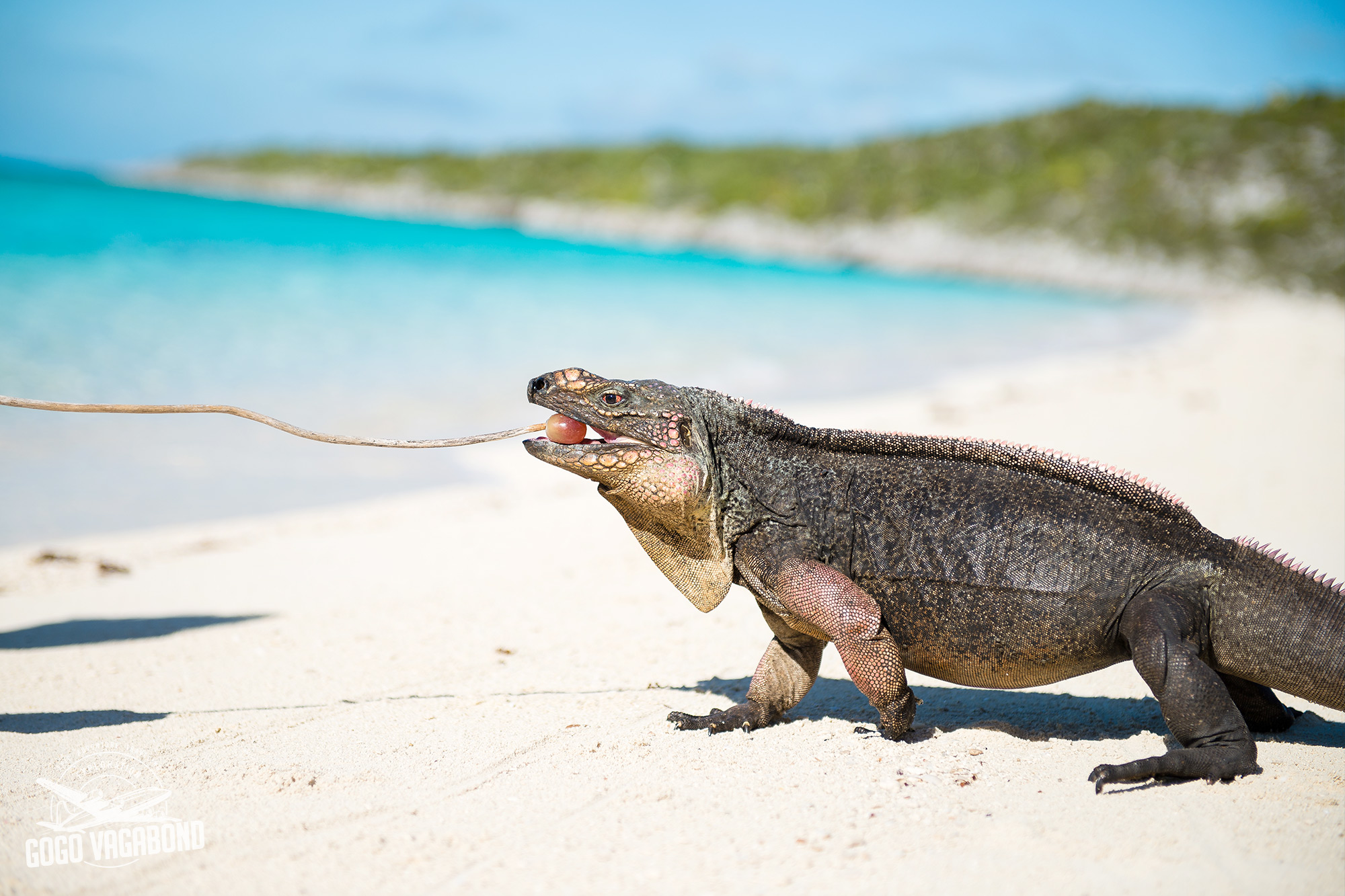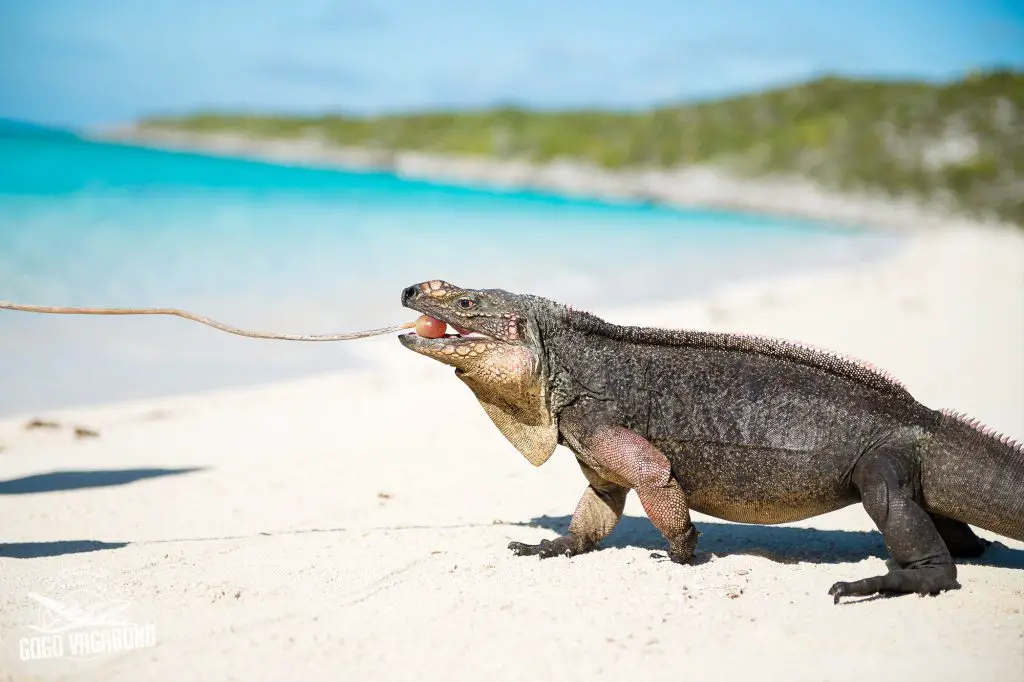Are you ready to meet some of the most unique creatures in the world? Look no further than the Exumas Allen’s Cay Iguanas! These fascinating reptiles are a must-see for any animal lover visiting the Bahamas. But before you go, here are seven things you need to know about these remarkable creatures.
First, these iguanas are only found on two small islands in the Exuma chain. They have adapted to their surroundings and have unique physical features such as razor-sharp claws and a distinctive orange and grey coloration. Get ready to learn more about these fascinating creatures and plan your trip to see them in person!
The Exumas Allen’s Cay Iguanas are a unique species of iguanas found on Allen’s Cay in the Exumas. Here are 7 things you should know about them:
1. These iguanas are not afraid of humans and will approach visitors for food.
2. They are strict herbivores and eat a diet of leaves, fruits, and flowers.
3. The Exumas Allen’s Cay Iguanas can grow up to 3 feet in length.
4. They are a critically endangered species with only around 1,000 left in the wild.
5. The iguanas are protected by Bahamian law and it is illegal to harm or harass them.
6. The best time to visit Allen’s Cay to see the iguanas is during the winter months.
7. It is important to respect the iguanas and their habitat by not feeding them unhealthy or non-natural foods.

7 Things to Know About Exumas Allen’s Cay Iguanas
Have you ever heard of the unique iguanas found on Exumas Allen’s Cay? These fascinating creatures are a must-see for anyone visiting the Bahamas. Here are seven things you need to know about them:
1. Appearance and Characteristics
The Exumas Allen’s Cay iguanas are large, herbivorous reptiles that can grow up to three feet long. They have a unique appearance, with a dark brown or gray body and a series of spines along their back and tail. These iguanas are also known for their striking orange eyes.
In terms of behavior, these iguanas are relatively docile and can often be found sunbathing on rocks or in the sand. They are not aggressive towards humans, but it is still important to be respectful and give them plenty of space.
2. Habitat
The Exumas Allen’s Cay iguanas are only found on a few islands in the Bahamas, including Allen’s Cay and Leaf Cay. These islands are uninhabited by humans, providing a natural habitat for the iguanas. The iguanas prefer rocky areas and can often be found basking in the sun on the rocks.
3. Diet
As herbivores, Exumas Allen’s Cay iguanas primarily eat leaves, fruits, and flowers. They have a unique digestive system that allows them to break down tough plant material, making them well-suited to their diet.
4. Conservation Status
Exumas Allen’s Cay iguanas are currently listed as endangered. This is due to habitat loss, as well as predation by introduced species such as feral cats. It is important to respect the iguanas’ habitat and avoid disturbing them in order to help protect this unique species.
5. Unique Adaptations
One of the most unique adaptations of the Exumas Allen’s Cay iguanas is their ability to change color. When they are cold or stressed, their skin can become a darker color. Conversely, when they are warm and relaxed, their skin can become lighter.
Another interesting adaptation is their ability to hold their breath for up to 30 minutes. This allows them to stay underwater for extended periods of time, making it easier for them to find food.
6. Tourism
The Exumas Allen’s Cay iguanas have become a popular attraction for tourists visiting the Bahamas. While it is important to appreciate these unique creatures, it is also important to be respectful of their habitat and avoid disturbing them. Many tour companies offer excursions to see the iguanas, but it is important to choose a company that prioritizes conservation and sustainability.
7. Benefits of Seeing the Iguanas
Visiting the Exumas Allen’s Cay iguanas can be a once-in-a-lifetime experience. Seeing these unique creatures up close and in their natural habitat can be a humbling and awe-inspiring experience. It can also serve as a reminder of the importance of conservation and protecting endangered species.
In conclusion, the Exumas Allen’s Cay iguanas are a fascinating and unique species that are well worth a visit. By respecting their habitat and appreciating their beauty, we can help protect this endangered species for generations to come.
Frequently Asked Questions
What are Exumas Allen’s Cay iguanas?
Exumas Allen’s Cay iguanas are a species of iguana that can only be found in the Exuma islands of the Bahamas. These iguanas are known for their unique appearance, with their bright green color and spines running down their backs. They are also incredibly docile and friendly, making them a popular attraction for visitors to the islands.
Exumas Allen’s Cay iguanas are an endangered species and are protected by law. It is illegal to harm or disturb these iguanas in any way, so visitors are encouraged to observe them from a distance and not to touch or feed them.
Where can I find Exumas Allen’s Cay iguanas?
Exumas Allen’s Cay iguanas can only be found on a few islands in the Exuma chain, including Allen’s Cay, Leaf Cay, and Ship Channel Cay. Allen’s Cay is the most popular spot to see these iguanas, as they have become accustomed to human visitors and are often seen sunning themselves on the beach.
Visitors can take a boat tour to Allen’s Cay and other nearby islands to see the iguanas up close. However, it is important to remember that these iguanas are protected and should be observed from a safe distance.
What do Exumas Allen’s Cay iguanas eat?
Exumas Allen’s Cay iguanas are herbivores and primarily eat a diet of leaves, fruits, and flowers. They are known to be particularly fond of hibiscus flowers and will often climb up to reach them.
It is important not to feed the iguanas as it can disrupt their natural feeding habits and can also be harmful to their health. Visitors should observe the iguanas from a distance and not attempt to feed them.
Why are Exumas Allen’s Cay iguanas endangered?
Exumas Allen’s Cay iguanas are listed as endangered due to habitat loss and predation by non-native species. The iguanas live in a very limited area and are vulnerable to habitat destruction caused by human development and climate change.
In addition, non-native species such as feral cats and rats are known to prey on the iguanas, further threatening their survival. Conservation efforts are underway to protect these iguanas and their habitat.
What can I do to help protect Exumas Allen’s Cay iguanas?
Visitors can help protect Exumas Allen’s Cay iguanas by observing them from a safe distance and not disturbing their natural habitat. It is also important not to feed the iguanas or leave any trash or debris on the beaches.
Supporting conservation efforts and donating to organizations that work to protect endangered species can also help ensure the survival of these unique and fascinating creatures.
In conclusion, visiting Exumas Allen’s Cay to see the iguanas is an experience unlike any other. These unique creatures are a fascinating sight to see and offer a rare glimpse into the natural wonders of the Bahamas. Whether you’re a nature enthusiast or simply looking for an adventure, visiting Allen’s Cay is a must-see attraction.
One of the most exciting things about the iguanas is their friendliness towards visitors. Unlike many other wild animals, these iguanas are comfortable being approached and even fed by humans. This offers a once-in-a-lifetime opportunity to get up close and personal with these fascinating creatures.
Finally, the beauty of Allen’s Cay itself is worth the visit. The crystal-clear waters and beautiful sandy beaches provide the perfect backdrop for a day of exploration and adventure. With so much to see and do, it’s no wonder that Exumas Allen’s Cay Iguanas are quickly becoming one of the most popular attractions in the Bahamas.


